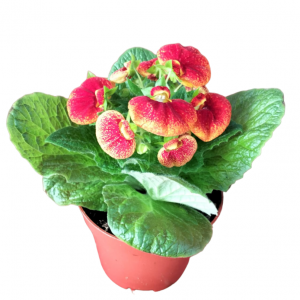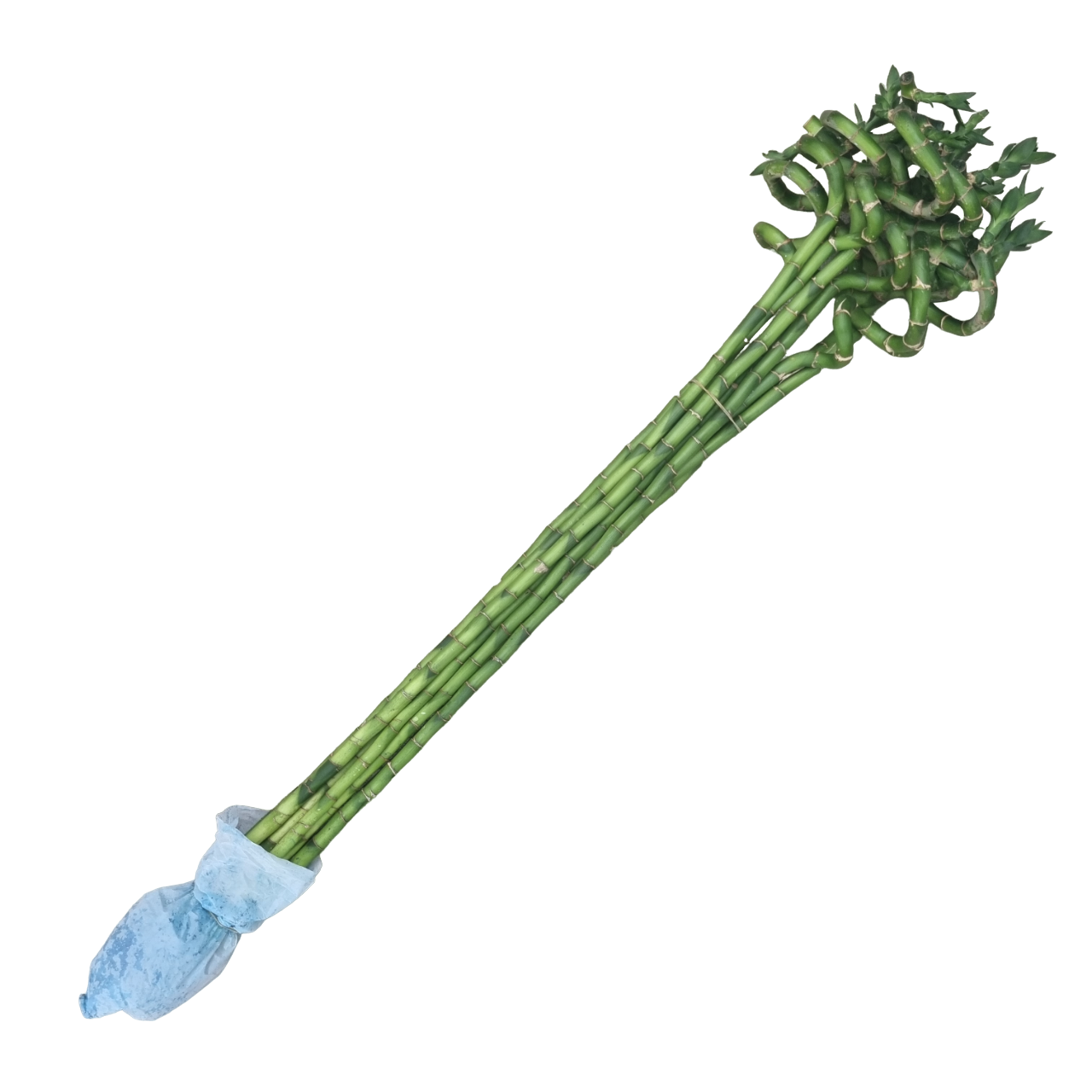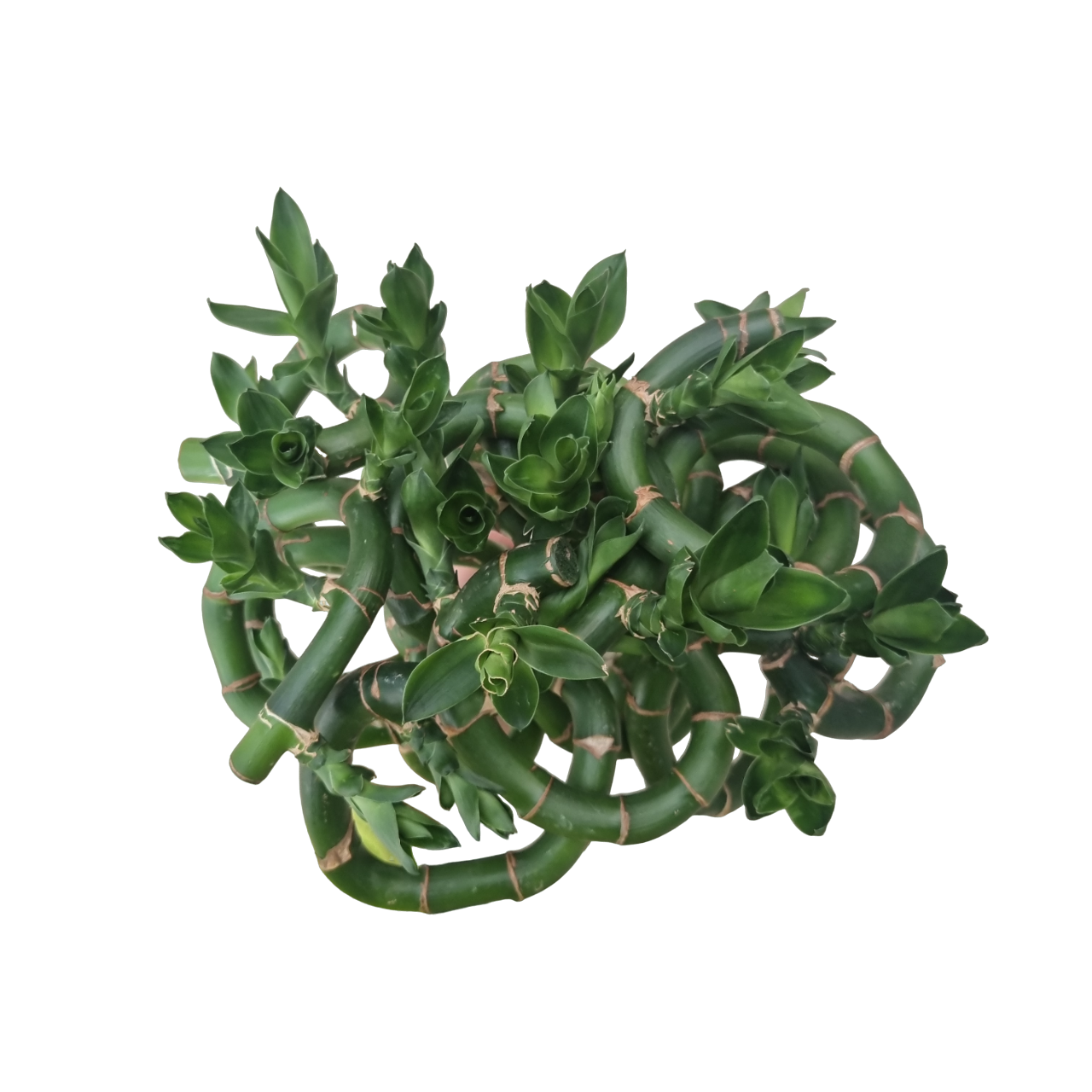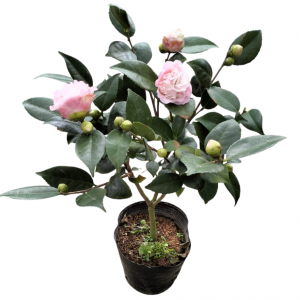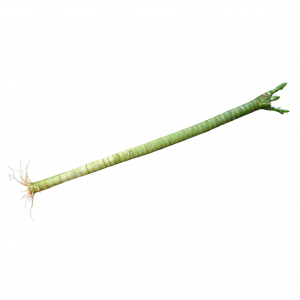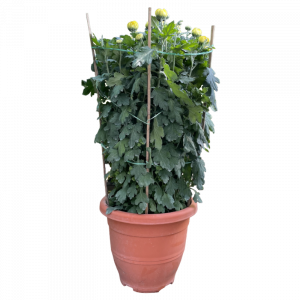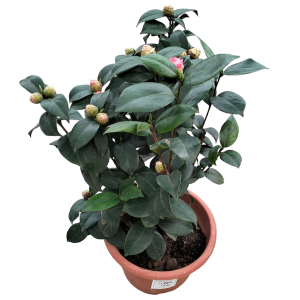Dracaena sanderiana, commonly known as Curly Bamboo or Lucky Bamboo, is a popular ornamental plant that originates from central Africa. Despite its common name, it is not a true bamboo but belongs to the Dracaena genus. It is widely valued for its distinctive appearance, with slender, twisting green stems and lush, pointed leaves. Often grown in water, it is a symbol of good luck, fortune, and prosperity, making it a common choice for indoor décor. The plant’s adaptability, minimal care requirements, and striking appearance have made it a favourite in homes and offices worldwide.
Plant Care Guide for Dracaena sanderiana
Light Requirements: Curly Bamboo thrives in bright, indirect light but can also tolerate low-light conditions, making it ideal for shaded indoor areas. Avoid placing the plant in direct sunlight, as this can cause the leaves to burn or yellow. If grown outdoors or in more brightly lit areas, ensure the plant is protected from harsh midday sun to maintain its vibrant green colour.
Watering:
Dracaena sanderiana is highly adaptable to water-based growing methods. If growing in water, ensure the roots are submerged and change the water every 2 weeks to prevent stagnation and the buildup of bacteria.
Fertilising:
Dracaena sanderiana does not require heavy fertilising. Feed the plant with a diluted, balanced liquid fertiliser. If grown in water, you can add a small amount of liquid fertiliser, but only sparingly, as over-fertilising can cause salt buildup and damage the plant.
Common Pests: Curly Bamboo is generally pest-resistant but can occasionally attract aphids, spider mites, or mealybugs, particularly if stressed or kept in dry conditions. Regularly inspect the leaves and stems for any signs of pests. If an infestation occurs, treat the plant with insecticidal soap or neem oil. Additionally, yellowing of leaves or browning tips can sometimes indicate too much direct sunlight, poor watering practices, or nutrient deficiency.
General Care:
Dracaena sanderiana is a low-maintenance plant that makes a great addition to any indoor space. Regularly clean the leaves with a damp cloth to remove dust and keep the plant looking fresh. It can be trained to grow in various shapes, including spirals and twists, by gently guiding the stems as they grow. If grown in water, ensure the plant is placed in a clean container to maintain its health, and replace the water regularly. It is also important to avoid letting the plant dry out completely if growing in soil, and to keep it away from direct sunlight or drafts.
Lighting: Bright Filtered Light
Aphids: Aphids are tiny, pear-shaped insects that range in color from green to yellow to black. They feed on the sap of plants using their sharp, piercing mouthparts and can cause stunted growth, curling leaves, and other damage. They reproduce quickly and can form large colonies, making them a common pest in gardens and greenhouses..
HB-101 Natural Plant Vitaliser: Every 2 Weeks.

